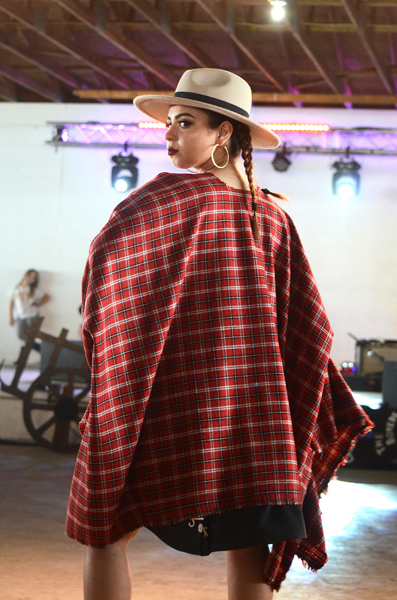
Beaded designs and the colours of the sash were on full display as Métis models walked the catwalk at the Back to Batoche grounds Saturday.
It was the first-ever Back to Batoche fashion show, featuring designs by two Métis designers from Saskatchewan.
Lydia Gardiner is from Ile-à-La-Crosse. She is the owner of Nipii designs.
She’s been designing for the past four years and graduated from the academy of fashion in Saskatoon, where she now lives.
“There are so many emotions,” she said after the show concluded Saturday.
“I feel excited, I feel proud — I’ve never had a fashion show this big. I’ve done fashion shows before, but they were in smaller settings, in high schools and campgrounds.”
Gardiner said there are more platforms for Indigenous artists and designers.
“Indigenous arts and designing are finally coming out, in the past five years in and around Saskatchewan and across Canada.”
Gardiner hasn’t taken her designs outside of the province but says she wants to. In the meantime, she has an active customer base, including Métis Nation-Saskatchewan president Glen McCallum, who bought all of her shirts for men and even modelled one in the show.
Gardiner displayed her fashions for men and women Saturday. Many were inspired by beadwork. Beading was how she got into fashion in the first place. Her grandmother beaded. Gardiner’s grandmother is in her late 90s and still beads.
“If you’re creative in arts, start where you’re comfortable. I started off with beading. I knew I had that skill somewhere in me from (my grandmother),” she said.
“I started beading and making clothing and it just escalated from there.”
Like Gardiner, Christine Tournier Tienkamp has only been designing for a few years, though she’s been sewing and beading for much longer.
Unlike Gardiner, who taught herself how to bead, Tournier Tienkamp learned from her mom.
“I just started doing fashion shows in the last four years,” she said.
“Just this last year I started to vamp it up because I saw there was a real interest to what I was doing. I have a real passion for keeping Indigenous culture alive, especially beadwork. I feel like it’s a lost art.”
Tourner Tienkamp said she beads in a traditional way with glass beads on wool or leather. She then photographs the beaded designs and has them printed onto garments such as skirts and scarves.
At first, Tournier Tienkamp said, she just dabbled in fashion, but from people’s reactions, she saw an opportunity.
“I felt like I had to step forward and keep that beadwork alive,” she said.
“We need to keep sashes visible, and beadwork, and bring it into a modern (design) so you can wear it daily.”
Like Gardiner, Tournier Tienkamp was nervous to present her fashions for a room full of fellow Métis people.
“I was so honoured to come here,” she said.
“This is the first time I’ve shown my stuff in an all-Métis environment. It made me nervous because this would be the audience I would respect the most. They understand the culture. I really wanted to do a good job. I was excited and felt really humbled that they asked me to participate.”
Soon, though, Tournier Tienkamp will get to display her designs on an even bigger stage.
She has been invited to visit Ryerson University in Toronto this May to take part in a three-day symposium on Indigenous fashion.
Tournier Tienkamp said that the Ryerson school of fashion saw that there weren’t many resources to teach Indigenous fashion or history of fashion, so they’re using Indigenous designers to help create those resources. The school of fashion did not respond to a request for comment.
“Ryerson is really taking initiative on reconciliation and weaving it into all of its programs, including fashion,” she said.
“They put out a call to anyone to do a submission about Indigenous fashion and how you would interpret it yourself,” she said.
Tournier Tienkamp had her submission selected. She, along with other indigenous designers, will be brought to Toronto for the symposium. The designers will also meet with an author who is going to write a chapter about their designs and cultural heritage.
“Mine is going to be about traditional Métis beadwork of my local area, here in Batoche and St. Louis, and how I’ve taken that into a contemporary design,” she explained.
“I’m really excited for that.”

